Buying any piece of jewelry can be a straightforward or complex process, depending on the research you do beforehand. This is especially true when shopping for an engagement ring. Understanding the different terminology associated with jewelry and the anatomy of jewelry items like rings can help ease your search immensely. To assist in your ring-buying journey, we’ve created this visual guide that’s designed to break down all things rings, from their structural components to different design considerations.
The Different Parts of an Engagement Ring
There are several key parts that make up a ring’s anatomy. Knowing how to differentiate these parts can help you explore your options and communicate your preferences during the buying process. Continue reading to learn more about the different parts of an engagement ring.
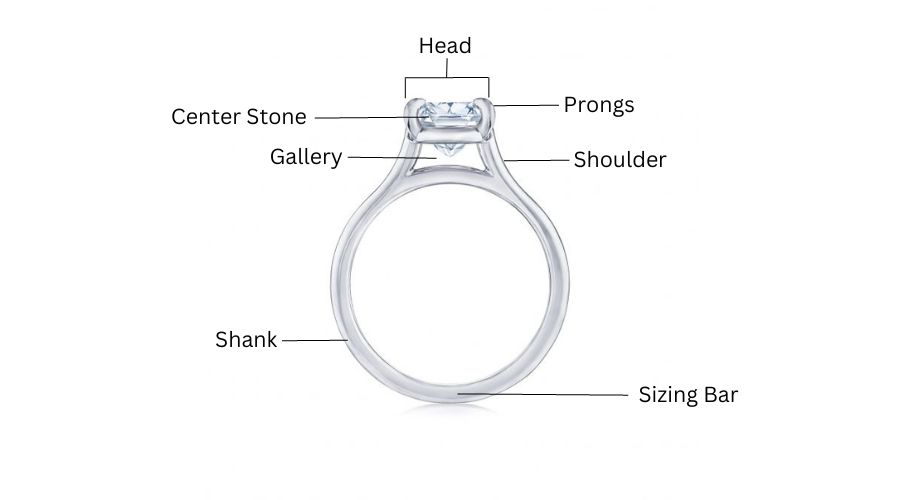
- Head: The head of a ring is made up of the center stone and the metal that surrounds the stone.
- Center Stone: The center stone is the largest, central stone in a ring.
- Prongs: The prongs of a ring are the metal pieces that hold the stone(s) in place.
- Gallery: The gallery can be seen from the side of the ring and is the area of a ring that fits over the top of the finger (the underside of the mounted center stone).
- Shoulder:The shoulder is the uppermost part of the shank that connects to the head/basket.
- Shank: The shank is the metal base, also known as the band, that goes around the finger.
- Sizing Bar: The sizing bar is the area at the base of the shank where a jeweler can resize the ring.
- Hallmark: A hallmark refers to the markings on the inner part of the shank indicating the precious metal and purity (i.e., 14K, Plat, etc.).
Center Stone Setting
The center stone is the central stone in a ring. It is the largest stone if other stones are present. Below are six popular center stone settings.
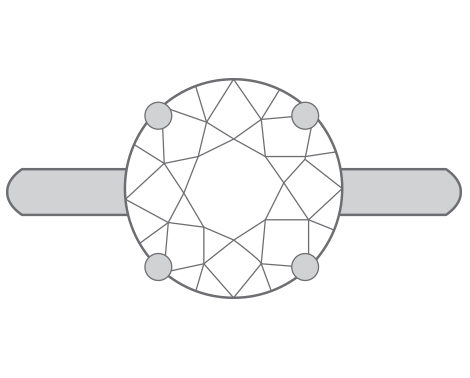
Solitaire Setting
A timeless classic, the solitaire setting features a single center gemstone. Traditionally, the stone is set high in the mounting to maximize the diamond’s exposure to light, enhancing its brilliance.
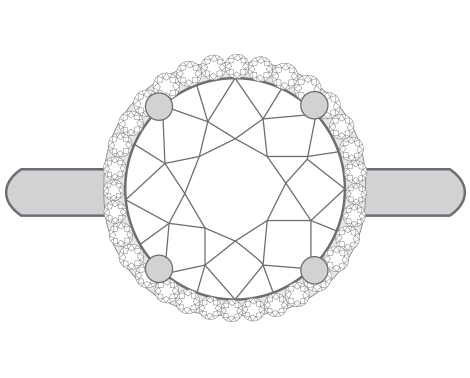
Halo Setting
A halo setting consists of a thin band of diamonds or gemstones surrounding the center stone. This halo accent can make the center stone appear larger than it actually is.
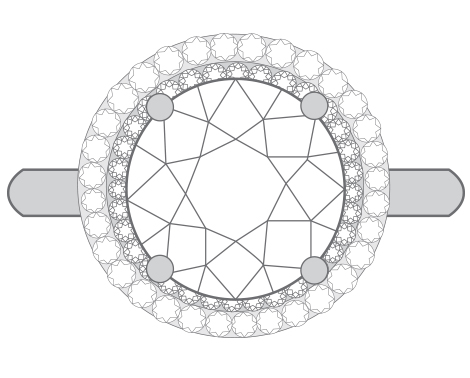
Double Halo Setting
A double halo setting consists of two thin bands of diamonds or gemstones surrounding the center stone, drawing more light and making the center stone appear larger.
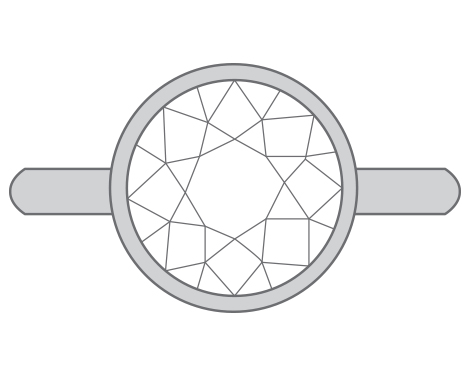
Bezel Setting
A bezel setting has a single ring of metal that secures the center stone, wrapping around its circumference. No prongs are used, so this setting is slightly more secure and ideal for wearers with an active lifestyle.
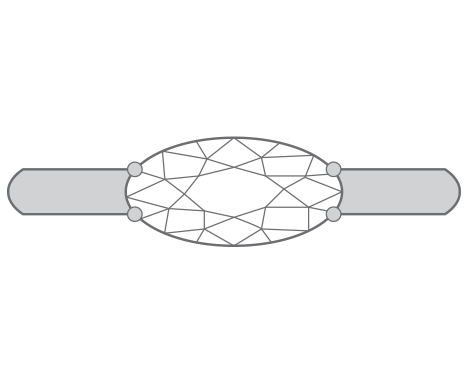
East-West Setting
An east-west setting places the center stone horizontally on the band. The stones in east-west settings are usually fancy shapes like an oval or emerald.
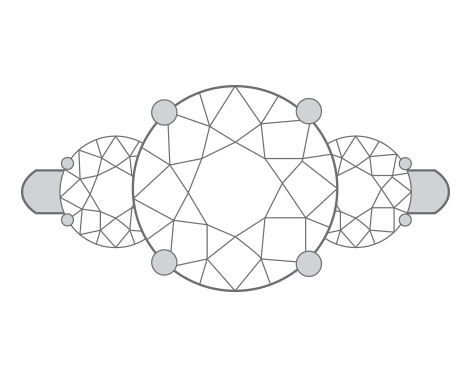
Three-Stone Setting
A three-stone setting is a ring with three diamonds or gemstones in a row. The center stone is typically more prominent, and this setting is meant to symbolize the couple’s past, present and future.
Head
The head, also referred to as the crown, of a ring refers to the part of the setting that holds the center stone in place. The head is made up of prongs, of which many options are available to keep the stone secure. Below are six of the most common types of heads used on rings.
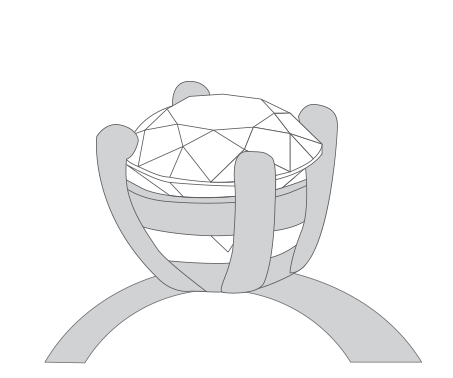
Basket Head
A basket head secures the center stone in a basket shape and is often used for larger stones that need a lower profile.
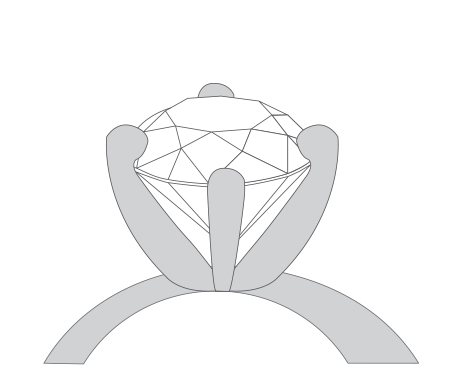
Peg Head
A peg head is soldered onto the shank separately and holds the center stone in a higher profile position.
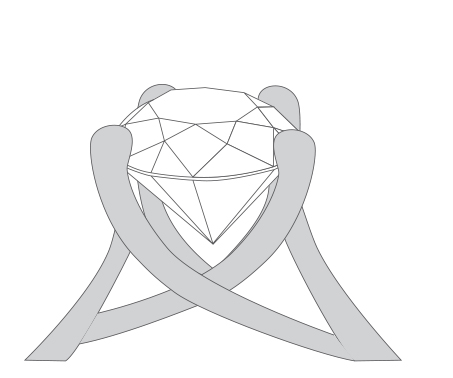
Trellis Head
A trellis head uses interwoven prongs to secure the center stone.
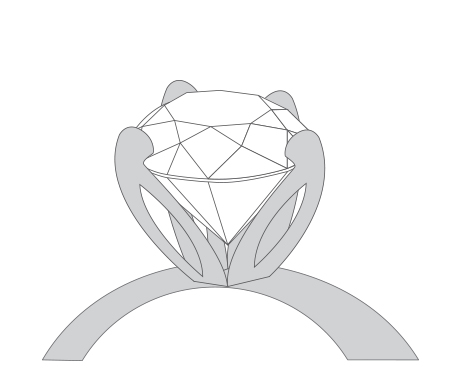
Tulip Head
A tulip head has prongs shaped like a tulip’s petals and can add an elegant look to a ring.
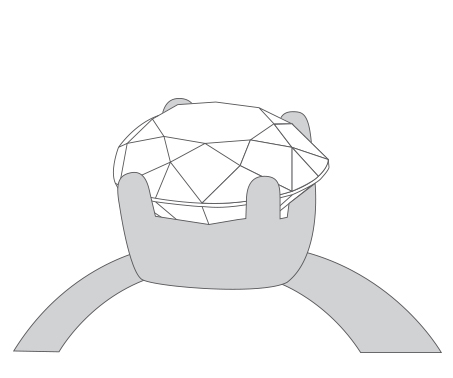
Low Set Head
A low set head allows the center stone to sit low in a mounting so it can maintain a low profile.
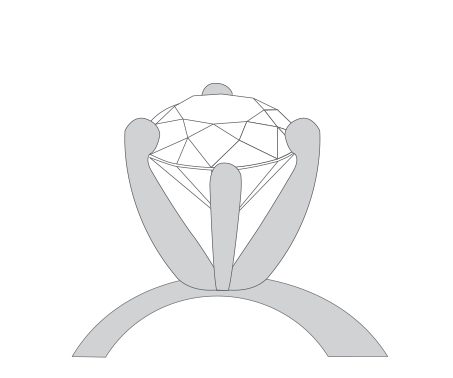
High Set Head
A high set head is a standard design that allows the center stone to sit higher to show off the stone better.
Prongs
Prongs are the metal pieces of the ring that hold the stones in place. Prongs expose the girdle of the center stone, allowing the maximum amount of light to enter from all angles. The more prongs a ring has, the more secure the stone is. Here are six prong options to be aware of.
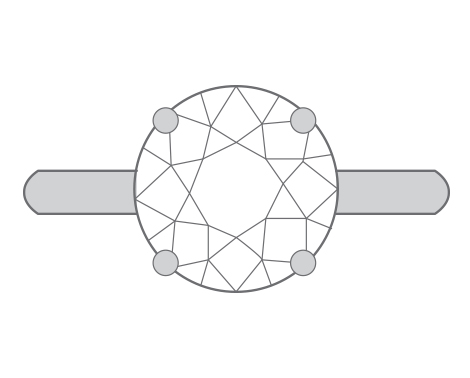
Four Prong
One of the most common prong styles, four prong rings leave more of the center stone exposed and are easy to repair.
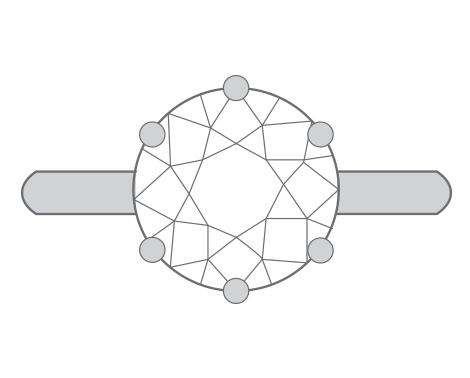
Six Prong
The six-prong style is recommended for stones larger than one carat that require additional support.
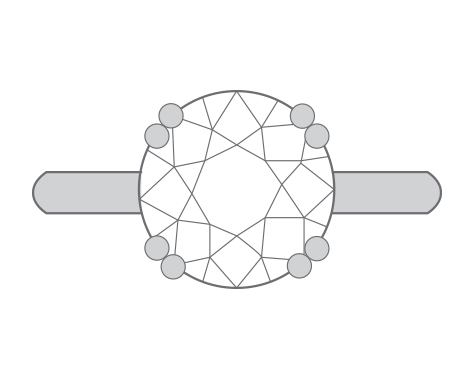
Double Prongs
Double prongs take the classic four-prong style and split each prong creating a more secure hold for unique diamond shapes like cushions and emeralds.
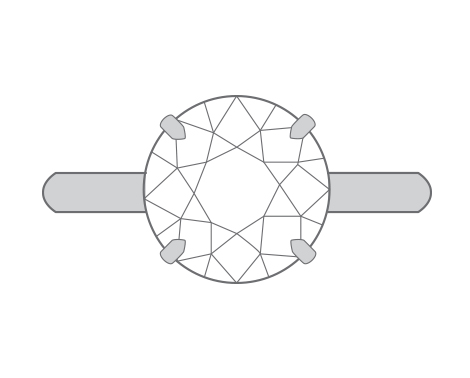
Claw Prong
Claw prongs taper off as they reach the center stone into a fine point.
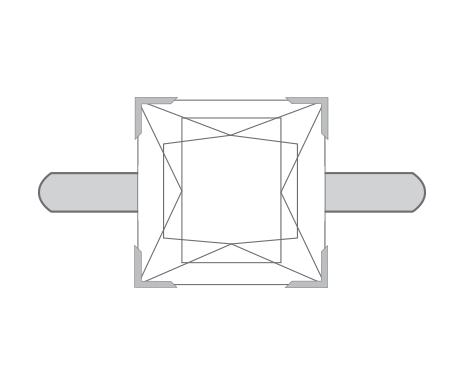
V-Prong
V-prongs are fittingly shaped like the letter V to provide additional protection for stones with vulnerable corners that could chip like princess cut or pear-shaped stones.
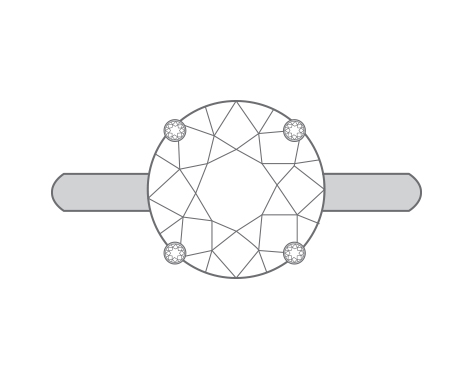
Diamond Tipped Prong
The diamond-tipped prong is similar to the four-prong design, but each prong is set with a tiny stone accent.
Accent Stones
Accent stones consist of diamonds or gemstones that accent the center stone. Not the same as side stones, accent stones are positioned along the ring’s band. Nine different accent stone setting options are outlined below.
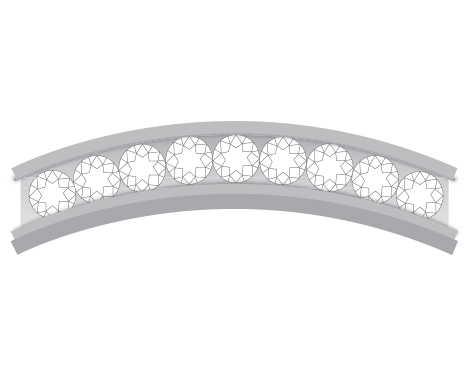
Channel
Channel accent stones are set into a grooved channel, edge to edge. This is an excellent option for someone with an active lifestyle, as the side stones are surrounded by metal and are very secure and protected.
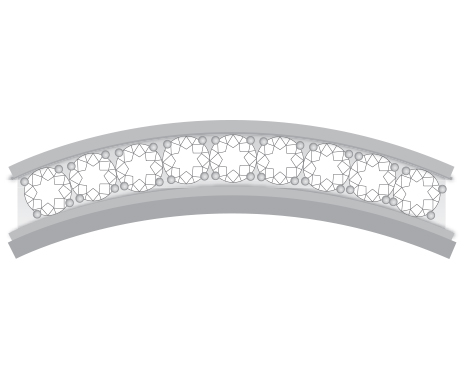
Bead & Bright-Cut/Pinpoint
Bead and bright-cut/pinpoint accent stones secure the stones with prongs set in a channel to keep everything in place.
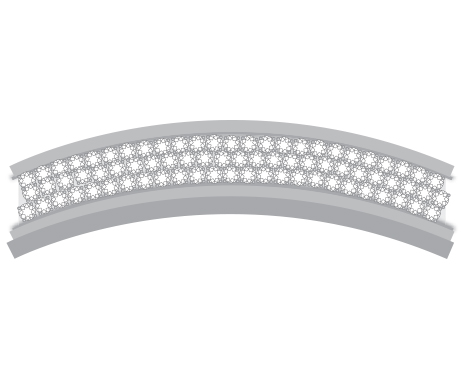
Pavé
Pavé is a bead setting where each accent stone is set into a recessed hole in the mounting and held in place by tiny metal beads attached to the side stone’s girdle.
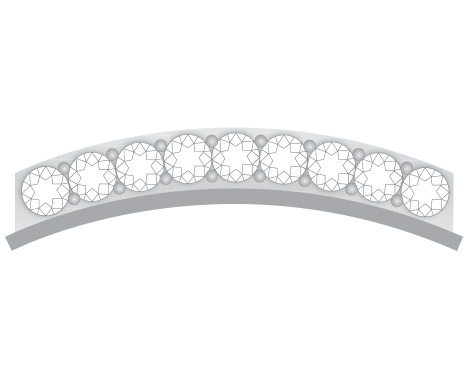
Surface Prong
Surface prong accent stones feature small shared prongs raised slightly above the surface of the metal that secure the accent stones.
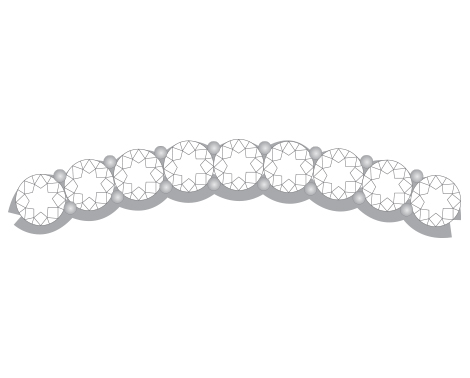
Shared Prong
Often used to hold larger accent stones in place, a shared prong basket head is a structured design with thin prongs and a metal bar. Accent stones are set side by side, “sharing” a prong with the stone next to it.
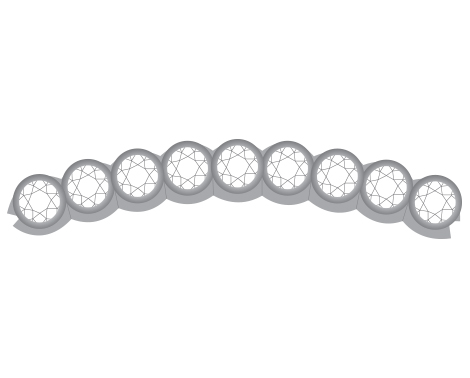
Bezel
Bezel set accent stones are held in place by a thin metal rim.
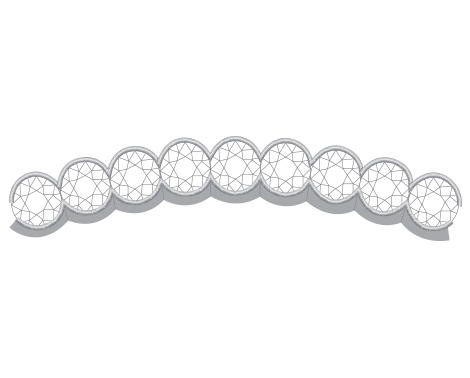
Half Bezel
Half-bezel accent stones have a metal rim that partially encompasses the accent stones.
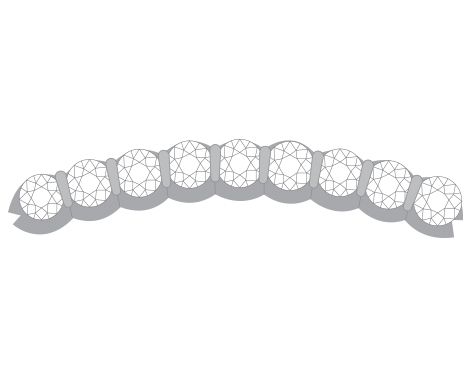
Bar
Bar set accent stones are held in place by small walls of enclosed metal.
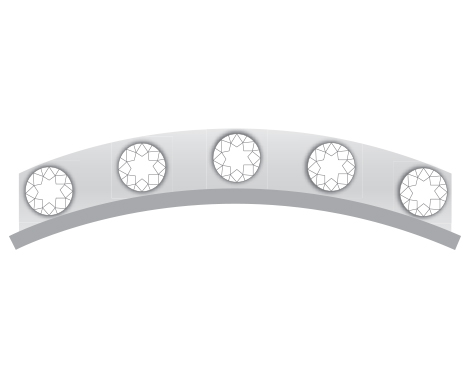
Gypsy/Flush
Gypsy/flush accent stones are set directly into the metal shank, and no prongs are present.
Side Stones
Not to be confused with accent stones, side stones are set on either side of the center stone. Side stones are available in various shapes. Some shoppers may choose to have the center stone and side stones match in shape, while others may prefer the side stones to be a different shape to add visual interest to the ring.
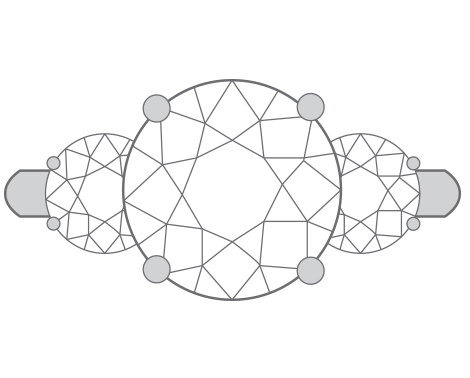
Round
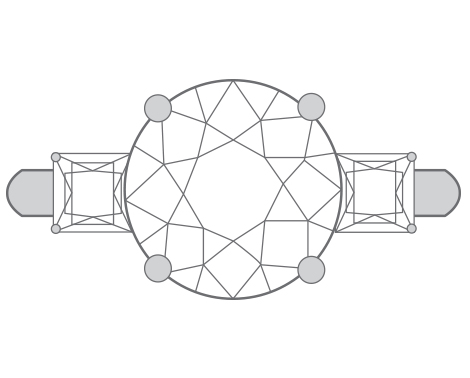
Princess
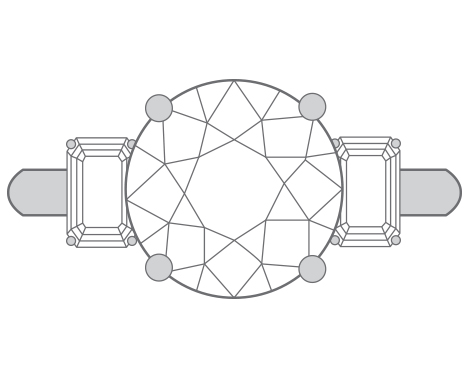
Emerald
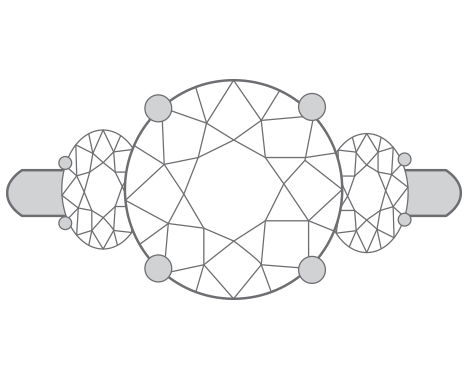
Oval
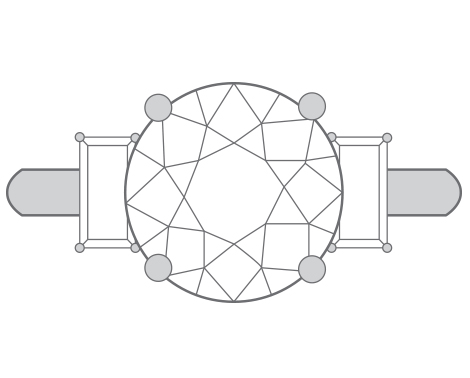
Baguette
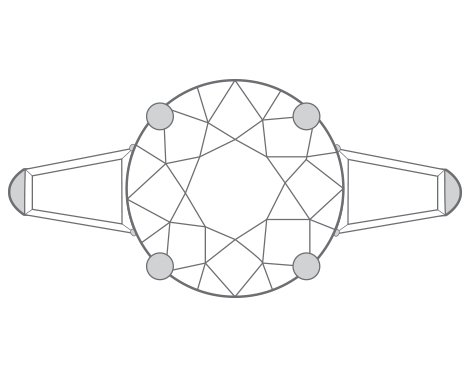
Tapered Baguette
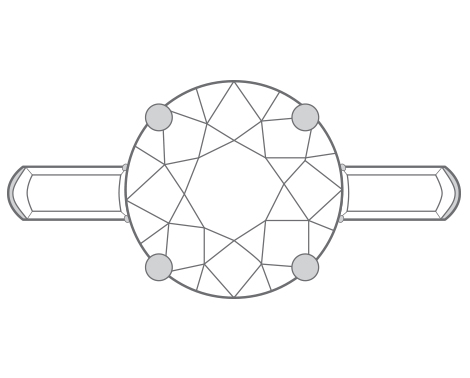
Bullet
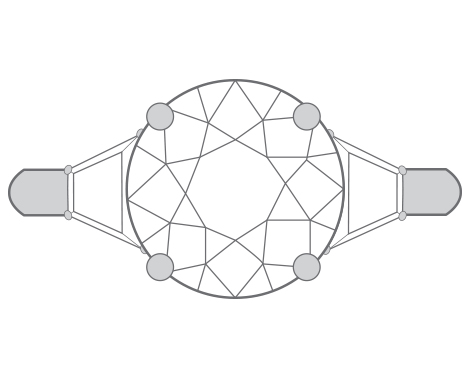
Trapezoid
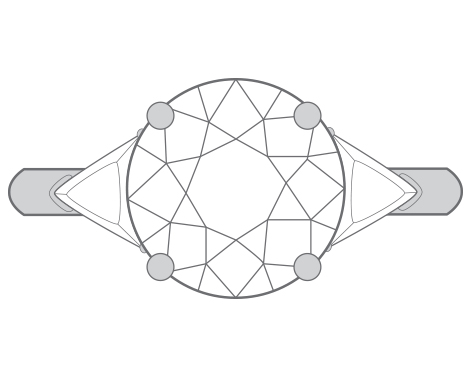
Trillion
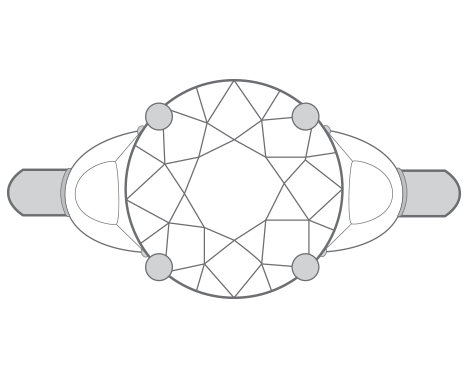
Half Moon
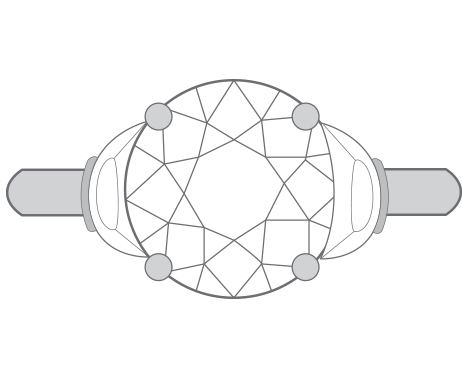
Crescent
Shank
A ring’s shank, more commonly referred to as the band, is the metal base of the ring that goes around the finger. It starts and stops at the head/basket.
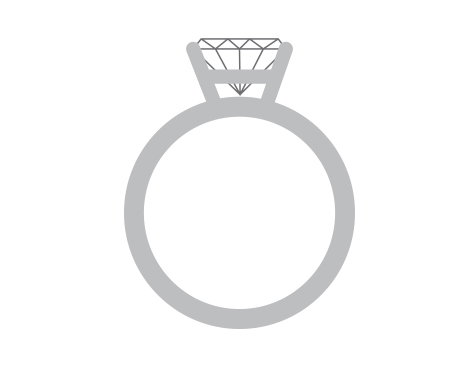
Traditional Shank
The ring’s band is perfectly round.

Euro Style Shank
The bottom of the band is slightly flattened and squared off on the outer edge, meant to keep the ring from spinning on the wearer’s finger.
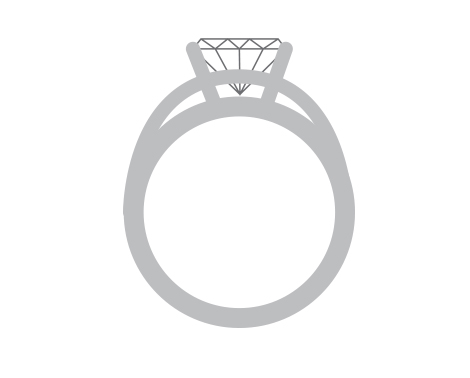
Cathedral Shank
This shank style allows you to see the center stone from the side, with arches on either side to protect the stone. It gets its name from the aesthetic similarities to old cathedrals.
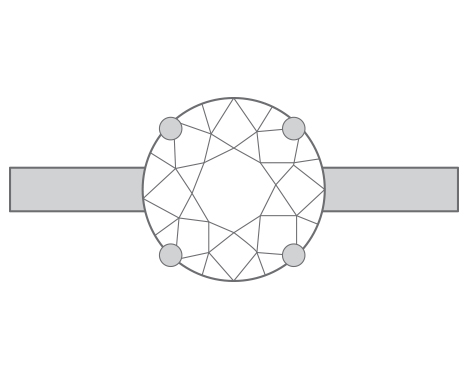
Straight
The ring’s band is straight, with no tapers or splits.
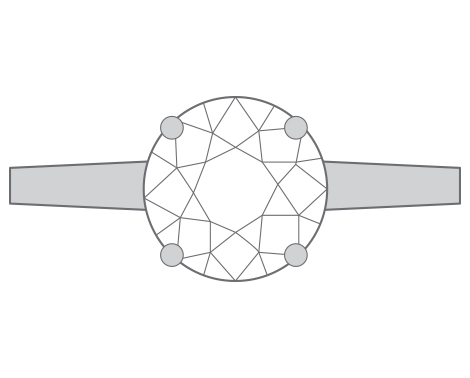
Tapered
The ring’s band tapers off into a thinner section away from the center stone.
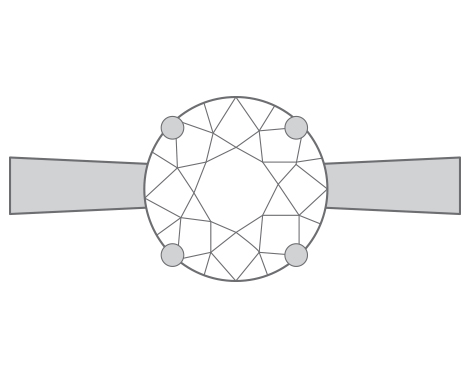
Reverse Tapered
The ring’s band tapers into a thinner section towards the center stone.
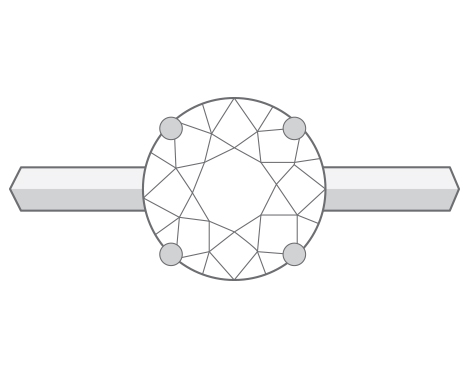
Knife Edge
This band contains two slanted sides that create the appearance of a sharp razor outer edge.
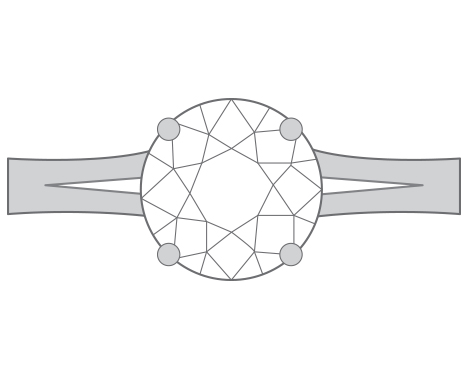
Split
The ring’s band splits in two and then joins back together where the center stone is set.
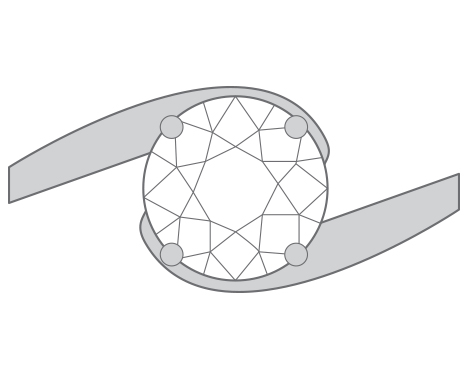
Bypass
Each end of the ring’s band bypasses the other, wrapping around the center stone.
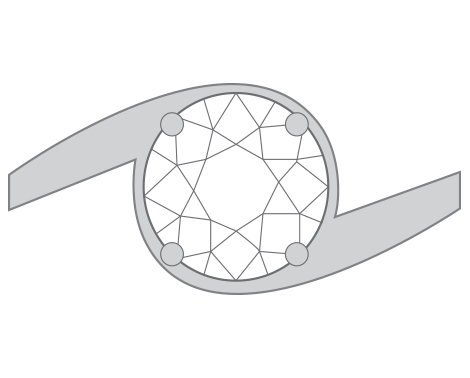
Swirl
The ring’s band swirls around the center stone, creating a halo effect.
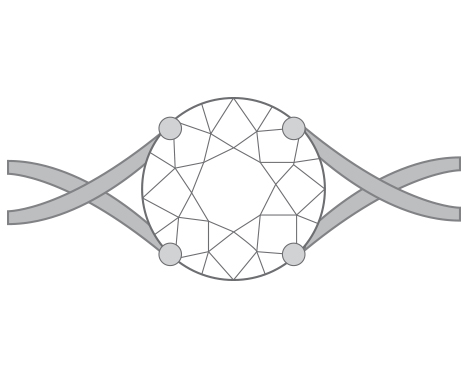
Criss Cross
This band is a split shank style, with each shank crossing over the other until they meet where the center stone is set.
Ring Design Techniques
Add a little something extra to the band of your ring with these unique design techniques.
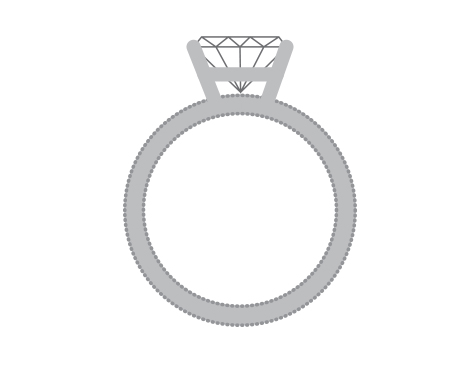
Milgrain
Milgrain uses small metal beading to accent the edge of a setting or to add a pattern to a halo or bezel set ring. Milgrain is common in antique or vintage-inspired rings.
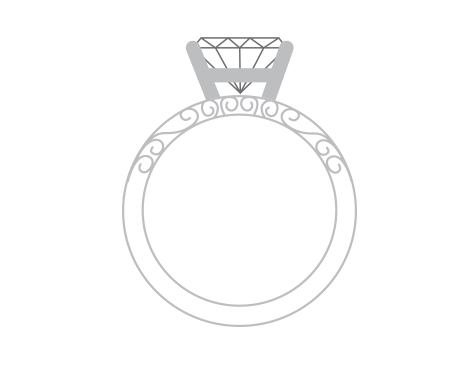
Filigree
Also common with antique or vintage-inspired rings, filigree is an embellishment on the shank or gallery of a ring consisting of spirals and swirls.
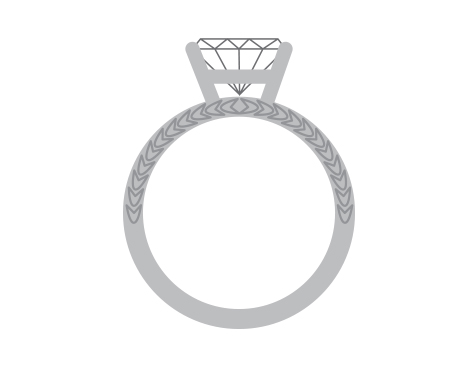
Engraving
Engraving involves carving a specified design or message into the metal of the shank. Engraving can be done on the outside of the inside of the ring.
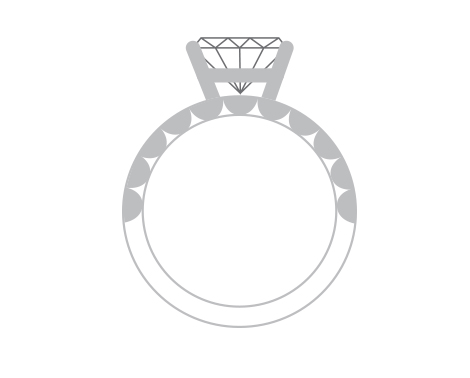
Pierced
Piercing is a design feature in which portions of the ring’s metal are cut out to create negative or open space.
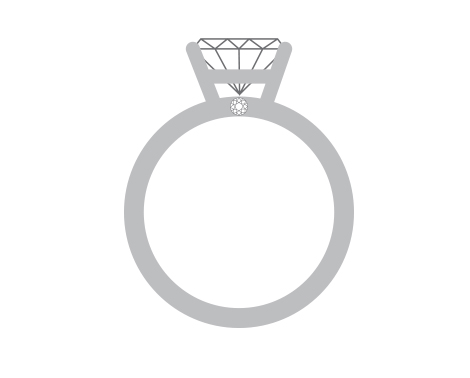
Surprise/Peek-A-Boo
Commonly found on the gallery, surprise or peek-a-boo accents involve hidden diamond(s) or gemstone(s) that are only visible from certain angles.
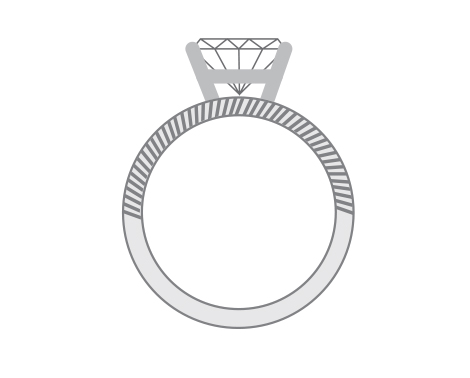
Rope
Roping is a design feature that makes the shank appear twisted like a piece of rope.
If you need help picking out the perfect ring for yourself or someone else, one of our experts would be happy to assist you. Stop into our store or text or call 402.391.0400 during store hours to speak with one of our friendly and knowledgeable sales associates.

